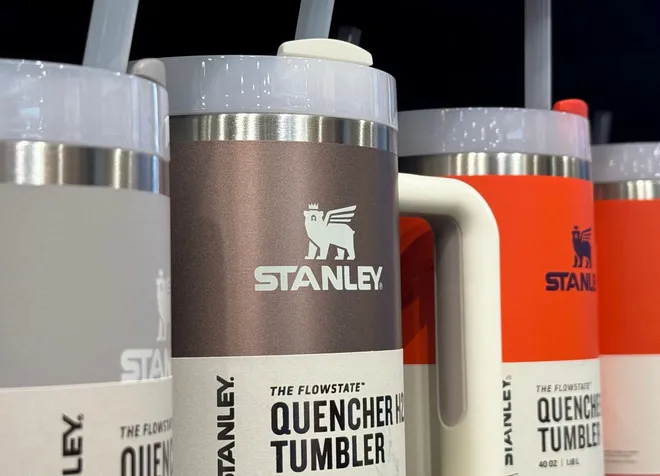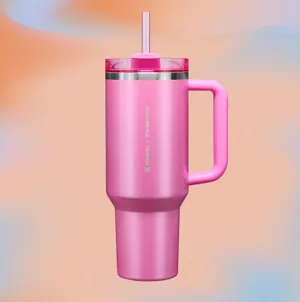Customers sue Stanley, say the company failed to disclose presence of lead in tumblers
The parent company behind the viral Stanley cup tumblers has been hit with a number of lawsuits over the last week by customers who say the brand failed to disclose that their products contained lead.
The proposed class action lawsuits, filed in U.S. District Court in Washington state come weeks after Stanley confirmed that the “sealing material” they use to secure the vacuum insulation at the base of their products contains “some lead.”
“Rest assured that no lead is present on the surface of any Stanley product that comes into contact with the consumer nor the contents of the product,” the company said in a release at the time.

Concerns about lead in the cups starting circulating after a number of consumers performed at-home lead tests on their tumblers and posting the results on social media, USA TODAY previously reported.
While they have apparently received varying results, there have been no reputable, consistent indications that the cups contain lead in the inner portion that holds liquid. And there have been no known reports of the cups causing any health issues for consumers.
Still some customers were not put to ease. Here’s what we know about the lawsuits.
Customers say the should have been warned
The separate suits were brought forth by two women, one from California and one from Nevada, who purchased one or more Stanley tumblers from a big box retail store.
The women allege that the company’s failure to “warn purchasers of the potential presence of lead” violated their right to make an informed decision about whether to purchase a cup in the first place.
Stanley calls claims 'meritless'
According to a statement obtained by USA TODAY Tuesday, Stanley will "vigorously defend itself against meritless claims."
“As we have shared, there is no lead present on the surface of any Stanley product that comes into contact with the consumer nor the contents of the product," the statement said.

What do the lawsuits against Stanley allege?
The Nevada litigant accuses the company of “engaging in a campaign of deceiving customers,” according to the lawsuit.
“Stanley knew or reasonably should have known about this lead issue for years but chose to conceal it from the public presumably to avoid losing sales,” the lawsuit states.
The California plaintiff says that Stanley has continued to “conceal the known risks and failed to warn of known or scientifically knowable dangers and risks associated with ingesting lead,” which is known to be dangerous even in trace amounts, the lawsuit alleges.
The average consumer, they argue, would have no reason to suspect that the cup had lead in it, alleging that the only way to confirm the presence of lead was through the individual purchase of scientific tests or reviewing third party scientific testing.
According to the lawsuit, the company also failed to consider that the vacuum seal could break and expose the user to lead, continuing to promote the product’s use “during strenuous activities that could increase the risk of the cup being dropped and/or damaged."
Stanley offers a lifetime warranty to customers in the “rare occurrence the base cap of a product comes off due to ordinary use and exposes this seal,” assuring that their products meet all “regulatory requirements."
"Stanley tests for and validates compliance on all products through FDA accredited third-party labs that verify our products follow strict guidelines, including but not limited to BPA/BPS, PFOS, and phthalate regulatory requirements," the statement reads.
Both women assert that the Stanley tumblers they purchased are “effectively worthless” because they do not perform or possess the basic capabilities advertised, adding that they would have not purchased the tumblers if they had known about the lead.
What does the lawsuit against Stanley’s parent company seek?
The women, who have filed the lawsuits on behalf of all Stanley customers, seek monetary compensation, a corrective advertising campaign, a product recall, and barring the company from selling the cups until lead levels are removed or fully disclosed, according to the lawsuits.
They also stated they would consider ordering and use Stanley products in the future if the company “guaranteed they had fixed the latent defect at issue here.”

Do Stanley cups have lead in them?
A drop containing lead is used on the bottom cap to seal the insulated cups, the company confirmed.
The bit of lead is enclosed in stainless steel, meaning the lead does not sit on the surface of the tumbler, nor does it come in contact with your drink inside, USA TODAY previously reported.
If you turn your insulated Stanley over, you will see a small circular cap on the bottom exterior of the cup. It is beneath this external seal that some lead can be found.
Multiple videos testing the cups for lead do swab this bottom portion after removing the cap cover, as opposed to the inside of the cup.
Contributing: Mary Walrath-Holdridge
Disclaimer: The copyright of this article belongs to the original author. Reposting this article is solely for the purpose of information dissemination and does not constitute any investment advice. If there is any infringement, please contact us immediately. We will make corrections or deletions as necessary. Thank you.







